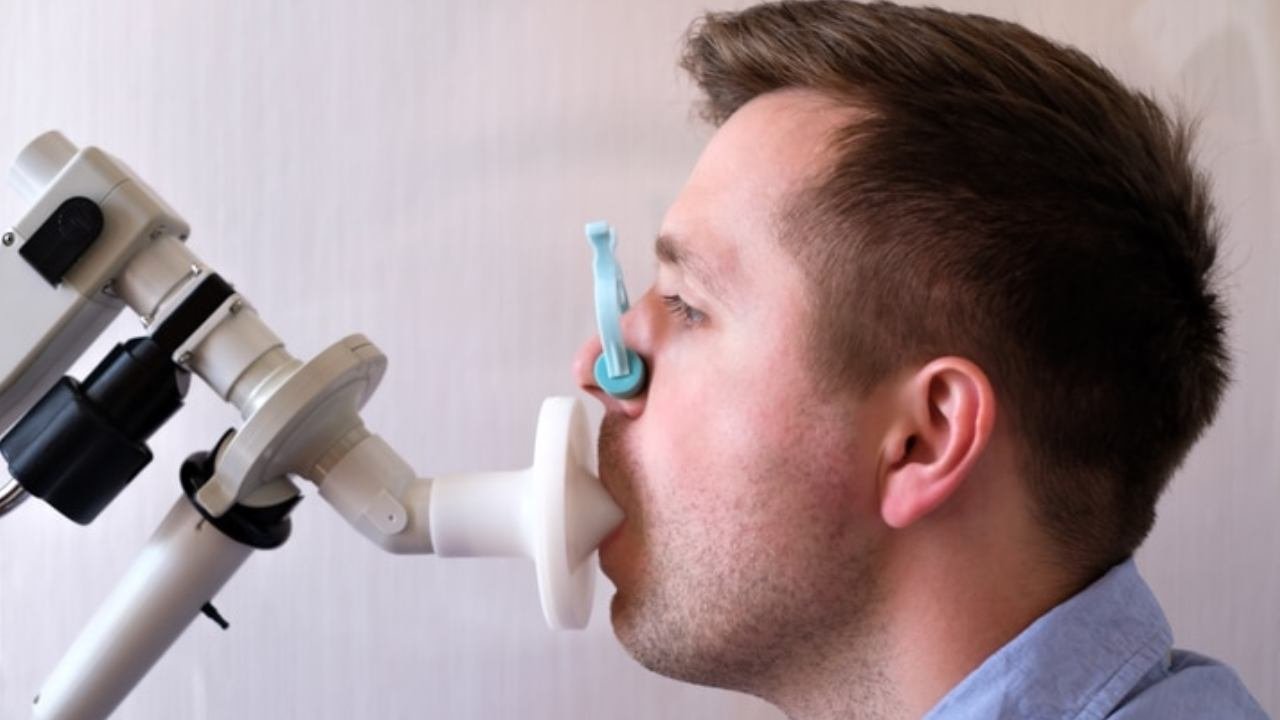🌿 Understanding Interstitial Lung Diseases (ILDs)
Interstitial Lung Diseases (ILDs) refer to a group of over 200 chronic lung conditions that cause inflammation and fibrosis (scarring) of the lung interstitium, leading to progressive respiratory dysfunction. Early diagnosis and management are crucial to slow disease progression and improve quality of life.
🫁 Common Interstitial Lung Diseases & Their Symptoms
1. Idiopathic Pulmonary Fibrosis (IPF)
- 🔹 Definition: A chronic, progressive fibrotic lung disease of unknown cause.
- 🔹 Symptoms:
- • Gradual onset of dry cough and progressive breathlessness
- • Velcro-like crackles on lung auscultation
- • Clubbing of fingers in advanced stages
- • Fatigue, unexplained weight loss
- 🔹 Risk Factors: Age >50, smoking, family history of ILD
2. Hypersensitivity Pneumonitis (HP)
- 🔹 Definition: An immune-mediated reaction to inhaled organic antigens (e.g., mold, bird droppings, hay).
- 🔹 Symptoms:
- • Acute: Flu-like symptoms (fever, chills, cough) after exposure
- • Chronic: Progressive dyspnea, cough, weight loss
- 🔹 Risk Factors: Farmers, bird breeders, exposure to moldy environments
3. Connective Tissue Disease-Associated ILD (CTD-ILD)
- 🔹 Definition: ILD associated with autoimmune diseases like rheumatoid arthritis, scleroderma, lupus, polymyositis.
- 🔹 Symptoms:
- • Joint pain, skin changes, Raynaud’s phenomenon
- • Gradual onset of breathlessness & cough
- 🔹 Risk Factors: Patients with known autoimmune diseases
4. Sarcoidosis
- 🔹 Definition: A multisystem inflammatory disease characterized by non-caseating granulomas.
- 🔹 Symptoms:
- • Hilar lymphadenopathy (CXR finding)
- • Dry cough, breathlessness, chest pain
- • Skin lesions (erythema nodosum), eye involvement
- 🔹 Risk Factors: African-American ethnicity, family history
📋 Diagnostic Workup for ILD
1. Clinical Evaluation
- 🩺 History & Symptoms: Onset and duration of cough and dyspnea, occupational & environmental exposure, family history of lung diseases, autoimmune disease symptoms (joint pain, rashes, Raynaud’s)
- 🔬 Physical Examination: Bibasilar “Velcro” crackles (especially in IPF), finger clubbing (advanced fibrosis)
2. Imaging Studies
- 📌 High-Resolution CT (HRCT): Gold standard
- • IPF: Bilateral reticular opacities, honeycombing
- • HP: Ground-glass opacities, mosaic attenuation
- • Sarcoidosis: Bilateral hilar lymphadenopathy
- 📌 Chest X-Ray (CXR): Often used as an initial screening tool
3. Pulmonary Function Tests (PFTs)
- 📌 Restrictive Pattern:
- ✔ ↓ FVC (Forced Vital Capacity)
- ✔ Normal or ↑ FEV1/FVC ratio
- ✔ ↓ Diffusing Capacity of the Lungs for CO (DLCO)
4. Laboratory Tests
- 🩸 Autoimmune Panel (for CTD-ILD): ANA, RF, Anti-CCP, Anti-Scl-70
- 🦠 Bronchoalveolar Lavage (BAL): Differentiates ILD subtypes
- 🔬 Lung Biopsy: If diagnosis remains unclear
🩺 Management Protocol for ILD
1. General Principles
- ✅ Early diagnosis & risk factor modification
- ✅ Regular pulmonary function monitoring
- ✅ Oxygen therapy for hypoxemic patients
2. Pharmacologic Treatment
- 📌 Idiopathic Pulmonary Fibrosis (IPF):
- 💊 Antifibrotic Therapy:
- • Nintedanib – Slows fibrosis progression
- • Pirfenidone – Reduces lung function decline
- 🚫 Avoid corticosteroids (may worsen prognosis)
- 💊 Antifibrotic Therapy:
- 📌 Hypersensitivity Pneumonitis (HP):
- 💊 First-Line: Antigen avoidance
- 💊 Corticosteroids (Prednisone) for severe cases
- 📌 CTD-ILD:
- 💊 Immunosuppressants:
- • Mycophenolate mofetil, Azathioprine
- • Cyclophosphamide (severe cases)
- 💊 Immunosuppressants:
- 📌 Sarcoidosis:
- 💊 First-Line: Corticosteroids (Prednisone)
- 💊 Second-Line: Methotrexate, Hydroxychloroquine (for refractory cases)
3. Supportive Therapy
- ✔ Pulmonary Rehabilitation – Improves exercise tolerance
- ✔ Supplemental Oxygen – For advanced ILD
- ✔ Vaccination – Influenza & Pneumococcal vaccines
4. Advanced Interventions
- 🫁 Lung Transplant: Considered for severe IPF & end-stage ILD
💬 Frequently Asked Questions (FAQs)
- 1. What are the early signs of ILD?
Early symptoms include progressive shortness of breath, chronic dry cough, and fatigue.
- 2. How is ILD different from COPD or asthma?
ILD is a restrictive disease with lung scarring, whereas COPD and asthma are obstructive diseases with airflow limitation.
- 3. Is ILD reversible?
🔴 Fibrotic ILDs (e.g., IPF) are irreversible, but early treatment can slow progression. Inflammatory ILDs (e.g., HP, Sarcoidosis) may be partially reversible with treatment.
- 4. What is the prognosis for ILD?
IPF has a poor prognosis (~3-5 years median survival without treatment), while HP and CTD-ILD have variable outcomes depending on early intervention.
- 5. What lifestyle modifications help ILD patients?
✔ Quit smoking
✔ Avoid pollutant exposure (e.g., dust, mold, fumes)
✔ Follow a healthy diet & exercise plan
✔ Stay up to date with vaccinations
📢 Conclusion: Prioritizing Early Diagnosis & Treatment
Early identification and multidisciplinary management are key to slowing ILD progression and improving quality of life.
✅ Regular follow-ups with a pulmonologist
✅ High-Resolution CT & Pulmonary Function Tests for monitoring
✅ Consider clinical trials for emerging ILD therapies
Would you like an interactive symptom checker or downloadable patient guides for your ILD webpage? 🚀






